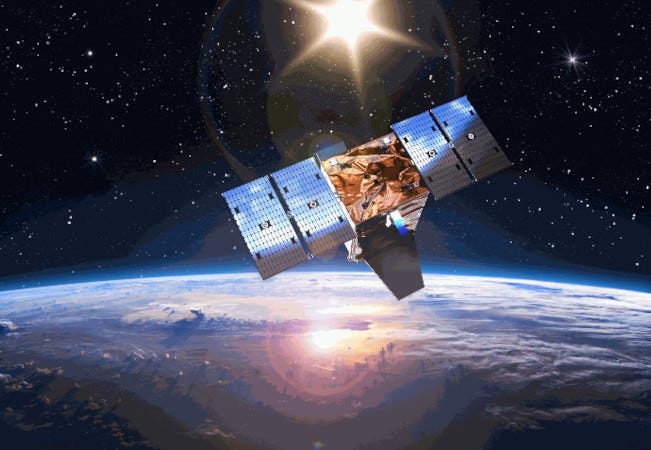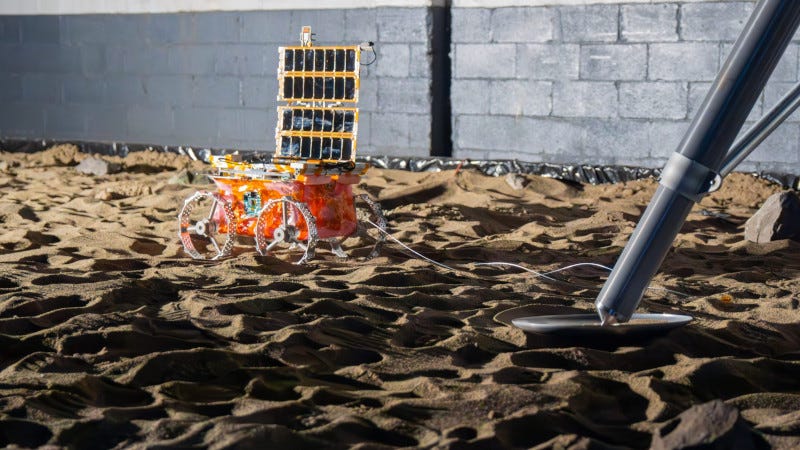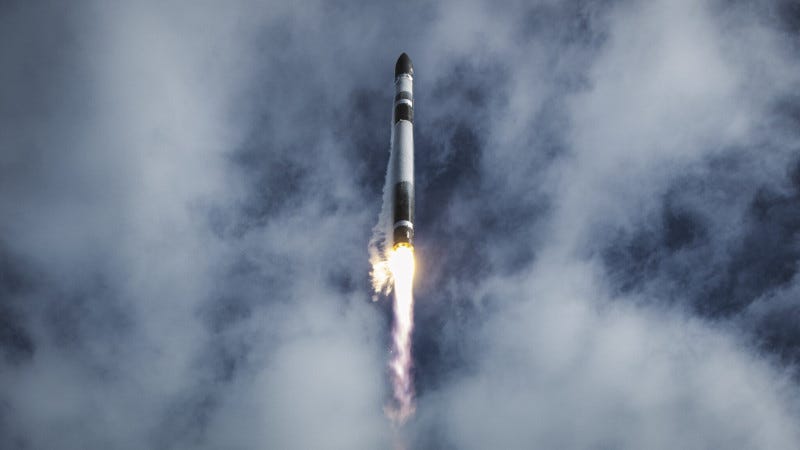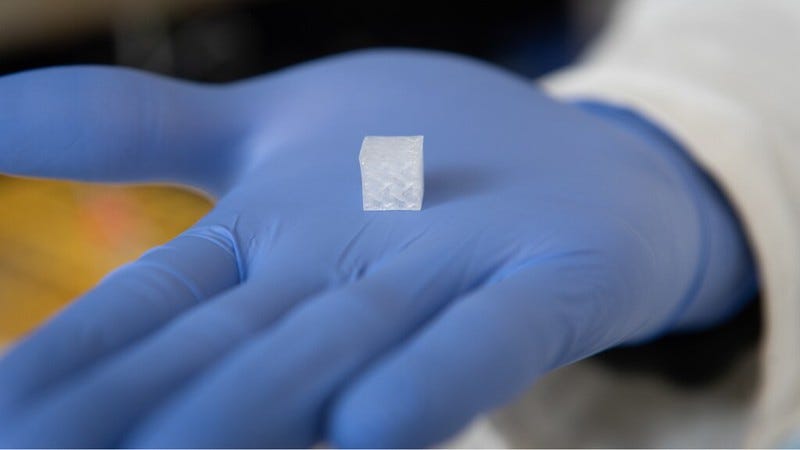The 10th Starship test flight, conducted Tuesday evening, met every major objective laid out for the flight.
The flight test began with Super Heavy successfully lifting off by igniting all 33 Raptor engines and ascending over the Gulf of America. The successful ascent was followed by a hot-staging maneuver, with Starship’s upper stage igniting its six Raptor engines to separate from Super Heavy and continue the flight to space.
Following stage separation, the Super Heavy booster completed its boostback burn to put it on a course to a pre-planned splashdown zone. Super Heavy entered into a final hover above the water before shutting down its engines and splashing down into the Gulf.
Starship completed a full-duration ascent burn and achieved its planned velocity, successfully putting it on a suborbital trajectory. The first in-space objective was then completed, with eight Starlink simulators deployed in the first successful payload demonstration from Starship. The vehicle then completed the second ever in-space relight of a Raptor engine, demonstrating a key capability for future deorbit burns. Moving into the critical reentry phase, Starship was intentionally stressed to push the envelope on vehicle capabilities. And then came a controlled dip into the Indian ocean.
The vehicle achieved orbital altitude, but the objective was not to complete a full orbit of the Earth. But you can feel pretty safe in predicting that we'll likely be seeing that in the not-too-distant future.
-0-
European satellite manufacturer Aerospacelab recently announced the closure of an extended Series B funding round totaling approximately $110 million through a dual-tranche funding of $66 million alongside a $44 million commitment from a European Financial Institution. This Series B round has been strategically implemented to align with Aerospacelab’s ambitious industrial roadmap and solidify its position as a major force in the aerospace industry.
This substantial investment has served to propel Aeropacelab’s growth trajectory and fuel its products’ readiness, resulting in a fleet of ready-to-sell satellites to demanding customers active in a variety of industries (e.g. earth observation, telecom, etc). Additionally, it has been directed towards the full verticalization of all key subsystems, reinforcing its industrial autonomy and accelerating its product development.
Aerospacelab’s Megafactory, a cornerstone of its industrial strategy, has already benefited from the Series B funding, enabling the company to build one of the most advanced satellite production sites in Europe, with a manufacturing capacity of up to 500 satellites per year. The capital has also been instrumental in accelerating R&D, attracting top-tier engineering talent, and fully verticalizing subsystems
-0-
A critical engineering milestone has been reached in the development of a lunar power demonstration mission by Astrobotic. The LunaGrid-Lite mission has now moved into flight hardware production.
The LunaGrid-Lite mission will deploy 1,640 feet of ultra-light cable across the lunar landscape and transmit 1 kilowatt of power using a CubeRover for the first time on the Moon's surface. The project successfully passed Critical Design Review, a major spacecraft development phase that finalizes all system designs and verifies they meet technical requirements before moving to flight component fabrication and assembly. The milestone puts the mission on track for completion by the second quarter of 2026.
With spaceflight component production now underway, the next major milestone will be the System Integration Review, scheduled for the fourth quarter of 2025. During this phase, completed hardware will undergo detailed evaluation to confirm readiness for full spacecraft integration.
The successful transmission of power across the lunar surface could enable future missions to operate through the two-week lunar night, when solar panels are ineffective. This capability is crucial for NASA's Artemis program and commercial lunar ventures planning long-term operations at the Moon's south pole.
-0-
Coming up, Rocket Lab cuts the ribbon on its new launch facility in Virginia. But right now why not take a minute to become a paid subscriber to The Journal of Space Commerce. Whether you’re a space professional, investor or an enthusiast, paid subscribers have first access to premium articles and podcasts focused on the new space economy. Just visit www.exterrajsc.com on Substack, and help keep The Journal of Space Commerce independent as we chronicle, cajole and, when necessary, critique the commercial space industry.
There's a new launch facility at Wallops Island, VA. Rocket Lab officially cut the ribbon on its new Launch Complex 3 (LC-3) Thursday morning in an event attended by company founder Sir Peter Beck, Virginia Governor Glenn Younkin and other government and NASA officials.
The facility is purpose-built for launching Rocket Lab's Neutron rocket, a fully-reusable launch system. The company says the advanced 8-ton payload class Neutron launch vehicle is designed to transform space access by delivering reliable and cost-effective launch services for satellite mega-constellations, deep space missions and human spaceflight. The booster will land on a 400-ft-long landing platform named ‘Return On Investment' that is currently under construction.
Beck explained the significance of the new launch facility. "With the opening of Launch Complex 3, we take a major step forward in ensuring resilient and assured space access for the nation ... a capability that has never been more critical,” he said. “Our high cadence, reusable launch vehicle Neutron will expand Virginia's capabilities, and enable the United States to quickly and reliably reach the International Space Station, Earth orbit, as well as explore the moon and beyond."
Governor Younkin called the Virginia spaceport an economic engine for the region that took a giant step forward with the signing of President Trump's executive order promoting the commercial space industry, and said that Virginia is now poised to take a leadership role in commercial space launch.
"In order to lead, it requires us to have an ecosystem that can fulfill not just the current requirements, but the future requirements of the most vibrant space industry complex in America. That is what we are building," Younkin said.
The first launch of a Neutron rocket from LC-3 is not planned until 2026, but Governor Younkin hinted that it might come before the end of this year. "If it's on Christmas Day, I'll bring the presents," the Governor quipped.
-0-
Meanwhile, on the other side of the planet, the 70th Electron mission was launched by Rocket Lab last weekend. The ‘Live, Laugh, Launch’ mission lifted-off from Rocket Lab Launch Complex 1 in Mahia, New Zealand on August 23, less than three weeks after Electron’s previous successful launch from the same site.
‘Live, Laugh, Launch’ was Electron’s 12th mission of 2025. The company says the majority of Electron missions launched this year, including this most recent mission, have been the continuation of multi-launch contracts with satellite operators to deploy their constellation in low Earth orbit.
-0-
Scientists have launched an experiment to the International Space Station (ISS) to study how 3D bioprinted liver tissue behaves in microgravity, a project led by the Wake Forest Institute for Regenerative Medicine. The investigation, sponsored by ISS National Labs, launched on SpaceX’s 33rd Commercial Resupply Services mission contracted by NASA, seeks to improve tissue engineering for medical treatments on Earth and in space.
The experiment focuses on 3D bioprinted liver tissue with vascular channels, which are critical for delivering oxygen and nutrients to keep tissues functional. On Earth, Wake Forest researchers have created liver tissue constructs that remain viable for 30 days, but maintaining large, thick tissues is challenging due to vascularization limitations. Microgravity may enhance cell behavior and tissue development, potentially overcoming these hurdles.
This experiment could revolutionize regenerative medicine by improving the creation of functional tissues for transplants, addressing the organ shortage crisis affecting over 100,000 people on U.S. transplant waiting lists.
Insights from microgravity may also help protect astronauts’ health during deep space missions, advancing both terrestrial healthcare and space exploration.
-0-
NASA has selected San Francisco-based Planette to develop QubitCast, a next-generation weather forecasting system. Powered by artificial intelligence (AI), the company says QubitCast will improve long-range or subseasonal-to-seasonal (S2S) weather predictions ... that is forecasts ranging from two weeks to two years ... beyond current limitations with a focus on extreme weather detection capabilities. The system will be designed to provide critical early warning signals for high-impact severe weather, making it possible to plan and prepare for extremes.
Planette’s layering of several physics-based models and AI enables its forecasts to extend further into the future than the industry norm of 10 days. The company combines atmospheric data with ocean and land inputs, and couples this modeling approach to fill a critical information gap between traditional short-term weather predictions and long-term projections, up to one year into the future.
With QubitCast, Planette is utilizing algorithms inspired by quantum physics, such as the ability to explore multiple possibilities in parallel. The breakthrough will allow the company to process data more efficiently and uncover hidden weather patterns with greater accuracy, delivering more timely and actionable forecasts without relying on the still-emerging hardware for quantum computing.
And those are some of the top stories we covered for you on The Journal of Space Commerce this week. Space Commerce Week is a production of Ex Terra Media. You can get daily updates on space commerce by subscribing to The Journal of Space Commerce on Substack at www.exterrajsc.com. And please consider becoming a paid subscriber. Whether you’re a space professional, investor or an enthusiast, paid subscribers have first access to premium articles and podcasts focused on the new space economy. Just visit www.exterrajsc.com and help keep The Journal of Space Commerce independent as we chronicle, cajole and, when necessary, critique the commercial space industry.
You Might have Missed:
Nyx Flight Thrusters to be Provided by Agile Space Industries
Japanese Spaceport Operator Partners With US Rocket Company for Feasibility Study
Australia And New Zealand Boost Satellite Navigation Services



















